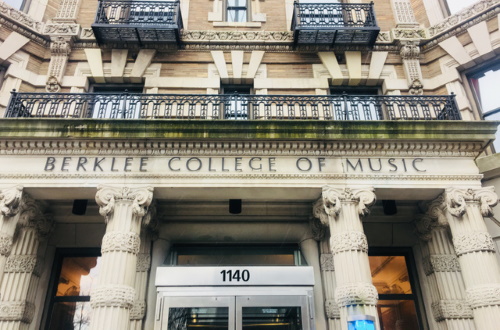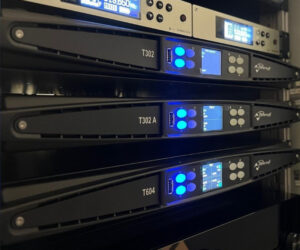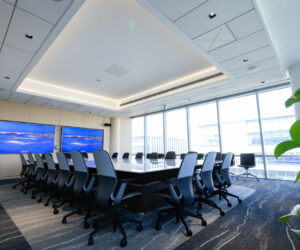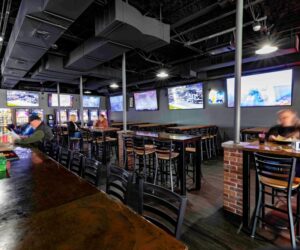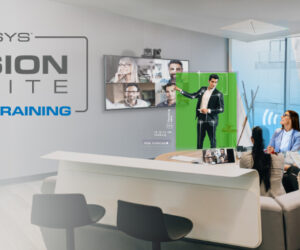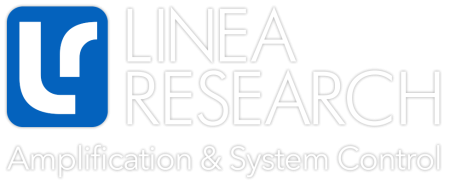Berklee College of Music has been known for decades as the premiere educational institution for students who are serious about developing careers in the contemporary music industry. Their diverse offering of both traditional instrumental performance and technology-based majors is well renowned in both musical and academic circles. Currently, the school is in the process of upgrading most of the rehearsal spaces on campus with the goal of providing high quality, easy-to-use live sound and real-time recording capabilities for its students and teachers.
Bill D’Agostino, senior director of Academic Performance Technology and Facilities, explains why their choice for doing so is QSC from top to bottom, including K.2 Series powered loudspeakers and TouchMix Series digital mixers.
“We’re extensively putting QSC in our rehearsal rooms, which are basically band-sized rooms that accommodate three to, say, 12 student musicians and a teacher,” explains D’Agostino. “We have ensemble classes in those rooms during the week, and these teach students how to play in various types of groups. We might have a heavy metal band next to an Art Blakey-style jazz ensemble next to a vocal group… all different styles. So, having a great-sounding and easy-to-use P.A. system that’s right for the room is key. For rooms of this size, we found the K10.2s really hit the sweet spot. They have more than enough low end for the larger rooms, but aren’t overpowering in the small ones. Then, we’ve been installing the TouchMix-8.”
D’Agostino describes this most compact member of the TouchMix family as “the perfect size” for the ensemble rooms, but notes that it’s not small on features. “We really like the Simple Mode and built-in effects,” he says, “because a lot of the time if students have a little reverb on their voice or compression on their bass guitar or whatever it is, sounding a bit more polished inspires them to practice harder.”
The TouchMix Series’ ability to save and recall multiple scenes also comes in extremely handy given the heavy use these rooms see. “We have something like 500 ensembles a week rotating through all the rooms on campus. At first, teachers were simply using the scene recall to zero the mixer back to a default state from where the previous class had left it. But recently, I’ve gotten the word out that they can actually save the entire configuration for their course, and keep saving it as the mix gets tweaked over the semester. They can save that on a USB thumb drive and use almost none of their valuable class time getting set up.”
D’Agostino also touts the TouchMix’s preset scenes, which provide “starter” mixes for different types of bands and source material. “You can pick a scene that’s close to the instrumentation of the class, then adjust it a little” he says. We’ve also started to let faculty know about the recording function of the TouchMix, which lets you plug a USB drive in and walk away with a multi-track or stereo mix of the class. This is a welcome feature for students and teachers reviewing their playing.”
Berklee is a famously technology-forward campus, but some departments use technology more than others. D’Agostino praises the ease of use of the TouchMix Series as instrumental (pun intended) in enabling more departments to use technology. “The TouchMix is really helping us realize a long-term strategy of bringing more technology into the performance side of music education,” he explains. “We have music production and audio engineering programs here—synthesis, loop creation, turntablism, all that. For the instrumental performance side of things, the TouchMix is an ideal bridge between technology and the live-band world.”
That QSC’s product line scales to meet different requirements is proving useful, because not all rehearsal and performance spaces at Berklee are created equally. “We have K8.2s in some of our smallest rooms, and in some of our medium sized rooms where we want to record public performances, we’re looking at K12.2s and the TouchMix-16 as an intermediate-sized system. Over the next few years, we’re looking to take old analog boards out of about 100 rooms and upgrade everything to QSC.”
Even at a school as storied as Berklee, budget is always a consideration, which is why D’Agostino flags bang-for-buck as QSC’s most important overall feature. “We often have to make a case for equipment budgets a couple of years out to get approval,” he says. “QSC gives us tremendous value, and that has made it easier to make that case. We have used many brands of P.A. equipment in the past, and to say that QSC performs better than gear that might cost more, well … that’s an understatement.”


